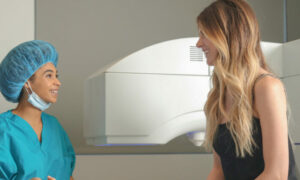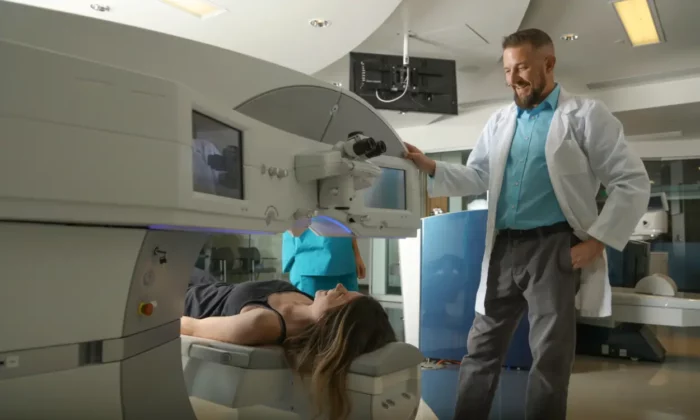Considering LASIK eye surgery and curious about the recovery time? You’re not alone. One of the most common questions about LASIK is, ‘How long until I can see clearly again?‘ While the promise of clear vision without glasses or contacts is exciting, it’s natural to wonder about the journey post-surgery. In this guide, we’ll walk you through the recovery timeline, compare flap-based to flapless procedures, and set your expectations for the days and weeks after LASIK. Let’s dive in and shed some light on what awaits you after the procedure!
Contents
Basics of LASIK Surgery
LASIK, which stands for Laser-Assisted In Situ Keratomileusis, has revolutionized the field of vision correction. As one of the most popular refractive eye surgeries globally, its primary aim is to reshape the cornea, allowing light to be properly focused on the retina, leading to clearer vision.
The procedure can be broadly categorized into two types: flap-based and flapless.
- Flap-based LASIK: In this approach, a thin flap is created on the cornea’s surface. The surgeon then lifts this flap to reshape the underlying corneal tissue using a laser. Once the desired correction is achieved, the flap is carefully repositioned, acting like a natural bandage as it heals.
- Flapless LASIK: Contrary to the flap-based method, flapless procedures, such as PRK (Photorefractive Keratectomy), TransPRK, and Epi Contoura, don’t involve creating a corneal flap. Instead, the corneal surface layer is gently removed, and the underlying tissue is then reshaped with a laser. Since there’s no flap creation, recovery might be slightly different and sometimes longer.
Choosing between the two typically depends on various factors, including the patient’s eye health, corneal thickness, and lifestyle. Each approach has its unique benefits and considerations, which we’ll delve into further as we discuss the recovery process.
Immediate Aftermath: First 24 Hours Of The Recovery
The initial 24 hours post-LASIK surgery is a crucial period, and understanding what to expect can make the experience much more comfortable.
- Vision Blur: Almost immediately after the surgery, you’ll notice that your vision is blurred. This is entirely normal. While flap-based LASIK might offer a rapid improvement in vision clarity, flapless procedures may take a bit longer.
- Discomfort: Some patients experience a mild burning or stinging sensation post-surgery. This discomfort, though temporary, is a part of the healing process. Your surgeon may provide you with lubricating eye drops to alleviate these feelings.
- The Urge to Rub: It’s not uncommon to feel an itch or an urge to rub your eyes. However, it’s vital to resist this urge. Rubbing your eyes can displace the corneal flap or disrupt the healing in flapless procedures, leading to complications.
- Light Sensitivity: Bright lights might seem glaring, and you could be more sensitive to light than usual. Wearing sunglasses can help combat this sensitivity when you’re outside.
- Tearing or Watering: Your eyes might water more than usual. While it might seem counterintuitive, this is a common response as your eyes might be dryer after the surgery, prompting them to produce more tears.
- Red or Bloodshot Eyes: Some patients notice red patches in the whites of their eyes. This is due to tiny blood vessels that might have been affected during the procedure. These will clear up on their own in a few days.
Remember, the first day post-surgery is about giving your eyes the best environment to start the healing process. By understanding what to expect and adhering to the aftercare guidelines, you’re setting the stage for optimal recovery.
Flap-Based vs. Flapless: A Recovery Comparison
When considering LASIK surgery, the choice between flap-based and flapless procedures significantly influences the recovery process. Here’s a comparative breakdown to help you grasp the differences:
| Aspect | Flap-Based LASIK | Flapless LASIK (e.g., PRK) |
|---|---|---|
| Initial Visual Clarity | Rapid improvement; many patients report clear vision the next day. | Gradual improvement over 4 to 10 days before achieving clear vision. |
| Initial Discomfort Level | Minimal to mild discomfort; often subsides within a few hours. | Might experience moderate discomfort which can last a few days. |
| Protection against Rubbing | Essential in the first few days to avoid displacing the corneal flap. | Important, but there’s no flap to displace. Still, avoid rubbing. |
| Sensitivity to Light | Mild to moderate, especially on the first day. | Can be more pronounced and last a bit longer than flap-based. |
| Use of Medication/Eye Drops | Prescribed drops for a week or so to prevent infection & inflammation. | Might need medicated drops for a more extended period. |
| Return to Normal Activities | Most daily activities can be resumed in a couple of days. | Might need a slightly longer break, especially if visual clarity is crucial. |
| 100% Recovery Time | 1 week to 1 month for complete healing and stabilization. | Similarly, 1 week to 1 month, but the initial visual recovery is slower. |
It’s essential to remember that individual experiences may vary. Regardless of the chosen procedure, adhering to post-operative instructions and regular follow-up visits with the surgeon ensures a smoother recovery.
Recovery During The First Week
 The first week after LASIK surgery is crucial for ensuring optimal results and minimizing complications. Here’s a day-by-day breakdown of what to expect and the precautions you should adhere to:
The first week after LASIK surgery is crucial for ensuring optimal results and minimizing complications. Here’s a day-by-day breakdown of what to expect and the precautions you should adhere to:
Day 1:
- Milestones: Noticeable improvement in vision, though it may still be slightly blurry.
- Precautions: Avoid rubbing your eyes, and wear sunglasses to protect them from bright lights and UV radiation. Avoid strenuous activities.
Day 2:
- Milestones: Further clarity in vision. Some people can often return to work and daily activities.
- Precautions: Refrain from using makeup or any products around the eyes. Avoid situations where dirt or dust could enter the eyes.
Day 3:
- Milestones: Steady improvement in vision continues. Night vision might start getting better.
- Precautions: Continue avoiding any activities that may strain the eyes like reading for prolonged periods or computer work.
Day 4-6:
- Milestones: Vision stabilization. Most patients achieve near-perfect or perfect vision by this point.
- Precautions: Avoid swimming, hot tubs, or activities that expose the eyes to potentially contaminated water.
Day 7:
- Milestones: The end of the initial recovery period. Most of the healing has taken place, though eyes might continue to improve over the next few months.
- Precautions: Even if feeling fully recovered, continue to use prescribed eye drops and avoid touching or rubbing the eyes.
Remember, during the entire week:
- Use prescribed eye drops regularly to prevent dryness and infections.
- Attend all scheduled follow-up appointments with the surgeon to track recovery progress.
- Report any unusual discomfort, severe pain, or sudden decrease in vision to the ophthalmologist immediately.
By adhering to these guidelines and being observant of any changes, you’re ensuring a successful and hassle-free recovery from your LASIK surgery.
Common Post-LASIK Symptoms & Tips To Manage Them

After undergoing LASIK surgery, patients typically experience a series of symptoms as part of the healing process. While these are usually temporary, being aware of them and knowing how to manage them can make the recovery journey more comfortable.
- Dry Eyes: This is one of the most common side effects post-surgery.
- Management: Your surgeon will prescribe lubricating eye drops. Use them as directed. Avoid environments that exacerbate dryness, like air-conditioned rooms or windy outdoor areas.
- Light Sensitivity: At times, patients may have increased sensitivity to bright lights, sometimes accompanied by minor headaches.
- Management: Wear sunglasses when outdoors. Reduce screen time and consider using screen filters. Dim room lighting as needed.
- Glare or Halos Around Lights: Seeing radiant circles around lights, especially noticeable during nighttime.
- Management: While this usually reduces over time, it’s advisable to limit night driving initially. If it persists, consult your doctor.
- Mild Discomfort or Itching: A slight itching sensation or a feeling of something being in the eye.
- Management: Do NOT rub your eyes. The sensation typically subsides within a day or two. If the discomfort is intense or persistent, contact your surgeo
It’s essential to remember that while these symptoms are common, every individual’s recovery journey might be slightly different. Always keep an open line of communication with your ophthalmologist and report any out-of-the-ordinary experiences.
So, When Will You Fully Recover?
 While LASIK surgery promises clearer vision and freedom from glasses or contact lenses, it’s essential to understand the recovery trajectory to set realistic expectations.
While LASIK surgery promises clearer vision and freedom from glasses or contact lenses, it’s essential to understand the recovery trajectory to set realistic expectations.
For many patients, the initial recovery phase post-LASIK is rapid. You might wake up the day after surgery to find your vision noticeably improved. In the ensuing days, many of the immediate post-operative symptoms, such as mild discomfort or blurriness, begin to diminish. By the end of the first week, many patients are back to their regular activities, enjoying their new-found clarity.
However, the body’s healing process is intricate and doesn’t operate on a fixed timetable. While the glaring symptoms subside early, subtle changes can still occur in the eye. For some, vision can fluctuate slightly or stabilize over a period of weeks. The cornea, where the surgery takes place, undergoes microscopic healing, and the eyes might continue to adjust for several weeks.
By the one-month mark, the majority of patients have realized the full benefits of the surgery, with their vision stabilized and any residual symptoms diminished. However, this doesn’t mean you should skip post-operative appointments. Regular check-ins with your surgeon ensure that any potential complications are identified and managed promptly.
In conclusion, while the transformative effects of LASIK are evident almost immediately after the surgery, the journey to full recovery is a gradual process that might span a few weeks.
Conclusion
Navigating the world with clear, unaided vision is a life-changing experience that many have already embraced thanks to LASIK surgery. With modern technology and expert surgical procedures, the journey to better sight has never been more efficient and promising. However, understanding the recovery process ensures that you can make the most of this transformative procedure without unwarranted surprises. If you’re contemplating taking this leap towards visual freedom, why wait? At EyeMantra, we prioritize your eye health and vision, offering top-notch LASIK procedures tailored to your needs. Experience the freedom of clear vision with Lasik Surgery at EyeMantra. Don’t delay your chance for a clearer tomorrow. Book your free appointment now at 9711116605.



